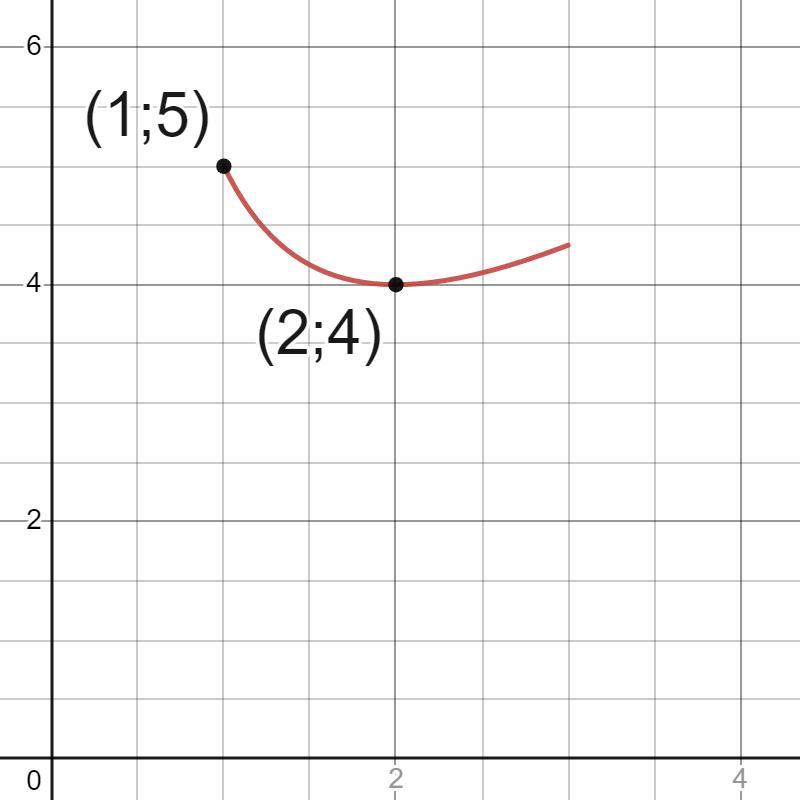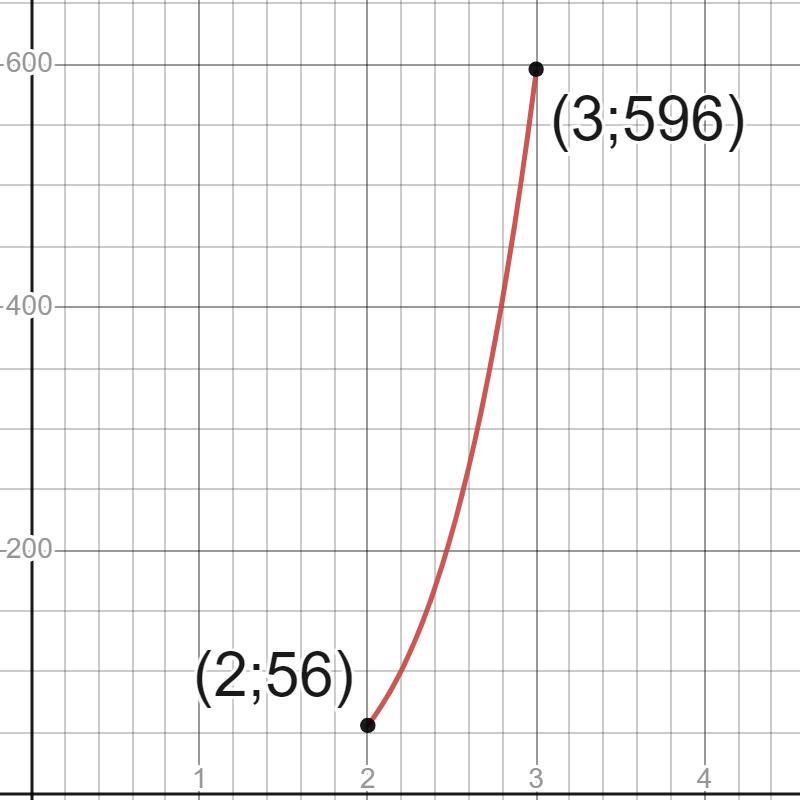Найдите наибольшее и наименьшее значение функции f:

Ответы
Объяснение:
1.
f(x)=x⁴-8x²-9 на промежутке [0;3]
1) Находим производную функции:
f'(x)=(x⁴-8x²-9)'=4x³-2*8x=4x³-16x=4x*(x^2-4)=4x*(x-2)*(x+2).
2) Приравняем производную к нулю и найдем стационарные точки;
4x*(x-2)*(x+2)=0 |:4
x*(x-2)*(x+2)=0
x=0; x+2=0; x-2=0
x₁=0; x₂=2; x₃=-2.
3) Выбираем стационарные точки, которые принадлежат заданному отрезку [0;3]:
x₁=0; x₂=2.
4) Вычиcлим значение функции на концах отрезка и в стационарных точках:
f(0)=0⁴-8*0²-9=0-0-9=-9.
f(2)=2⁴-8*2²-9=16-8*4-9=7-32=-25.
f(3)=3⁴-8*3²-9=81-8*9-9=72-72=0.
Наибольшее значение равно 0.
Наименьшее значение равно -25.
Ответ: наибольшее значение f(3)=0,
наименьшее значение f(2)=-25.
2.
Наибольшее значение равно 5.
Наименьшее значение равно 4.
Ответ: наибольшее значение f(1)=5,
наименьшее значение f(2)=4.
3.
f(x)=3x⁵-5x³ на промежутке [2;3].
1) f'(x)=(3x⁵-5x³)'=5*3x⁴-3*5x²=15x⁴+15x²=15x²*(x²-1)=15x²*(x+1)*(x-1).
2) 15x²*(x+1)*(x-1)=0 |:15
x²*(x+1)*(x-1)=0
x²=0; x+1=0; x-1=0
x=0; x=-1; x=1.
3) cтационарных точек, которые принадлежат заданному отрезку [2;3], нет.
4)
f(2)=3*2⁵-5*2³=3*32-5*8=96-40=56.
f(3)=3*3⁵-5*3³==3*243-5*27=729-135=594.
Наибольшее значение равно 594.
Наименьшее значение равно 56.
Ответ: наибольшее значение f(3)=594,
наименьшее значение f(2)=56.
4.
3) cтационарных точек, которые принадлежат заданному отрезку [1;5], нет.
Наибольшее значение равно 5/6.
Наименьшее значение равно 1/2.
Ответ: наибольшее значение f(5)=5/6,
наименьшее значение f(1)=1/2.



